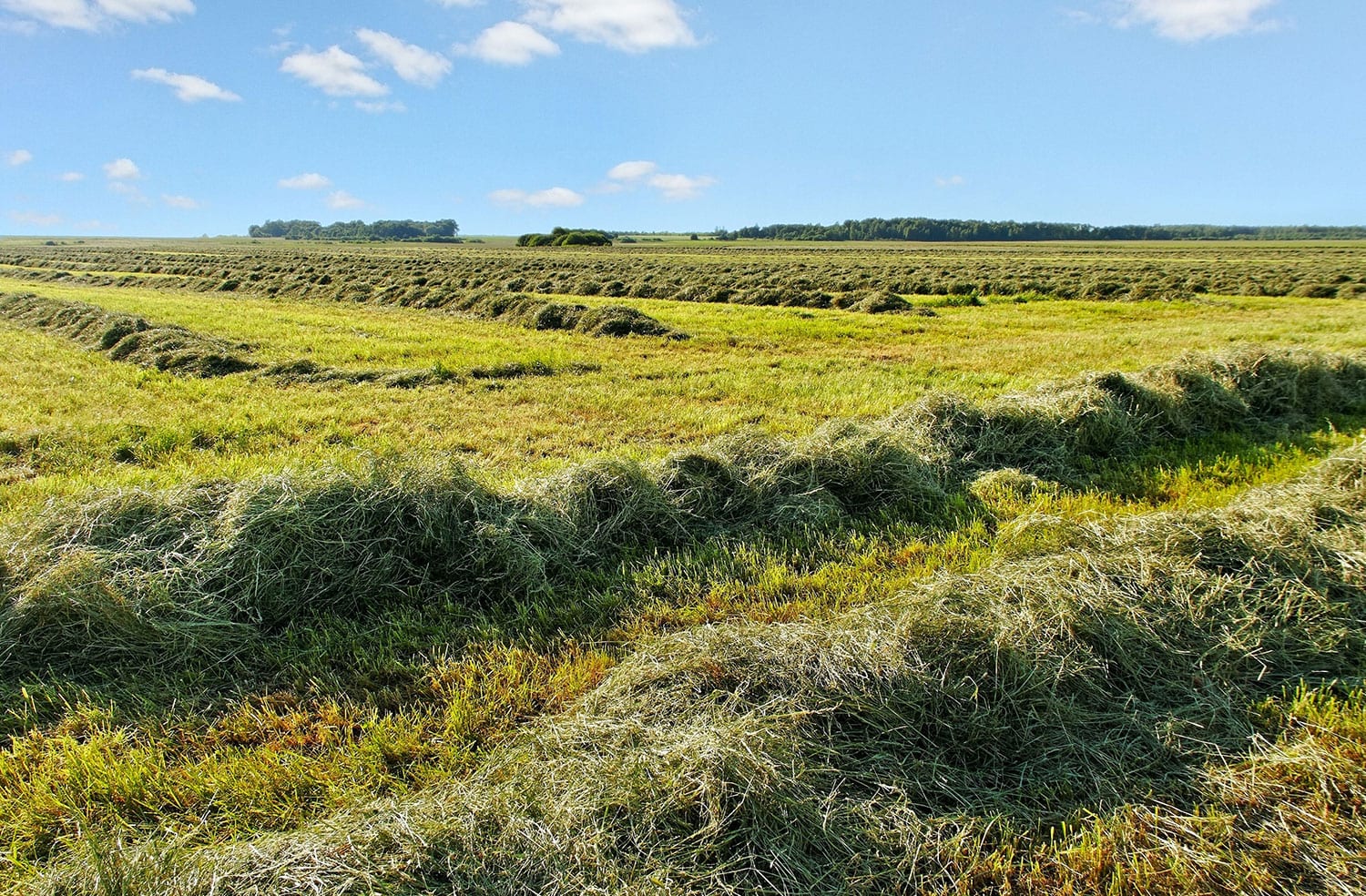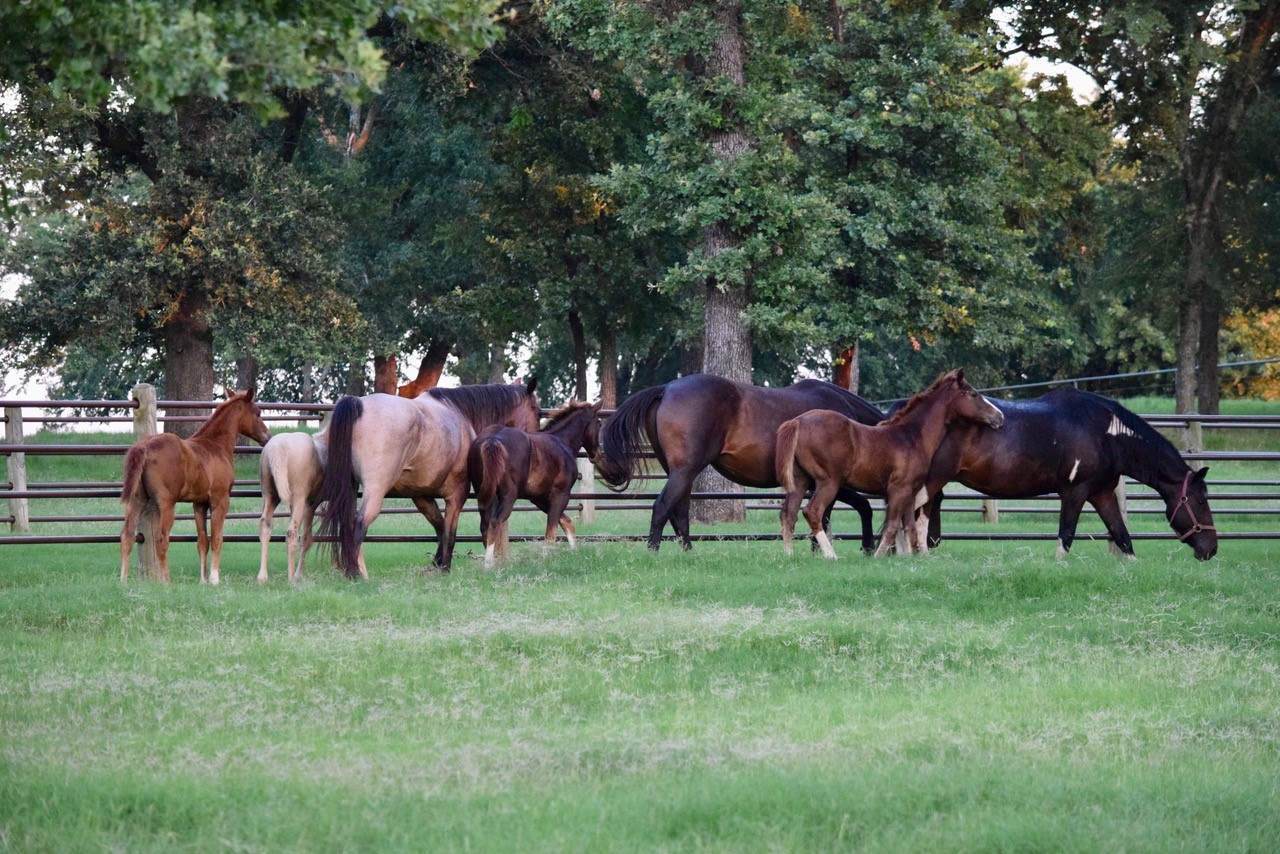Tired of paying more for second cutting hay than your livestock neighbors pay for supposedly “lower quality” hay from first or third cuttings? Then we have good news for you. It is a myth that second cutting hay always provides the hay quality that is best for feeding horses.
For many, the science of harvesting hay is best left to professionals while we resort to educated guesses for determining how good hay is. Is it second cutting? Does it smell good? Is it green and leafy? But with a little more detailed understanding of what makes hay safe and nutritious for horses, you can be equipped to feed your horses well and perhaps even save a little money in the process.
Origin of the “Second Cutting Hay is Best For Horses” Myth
Myths typically develop from a seed of truth. In this case, the reality is that the maturity of the grass at harvest is the single most important contributing factor to the nutritional value of hay. Early maturity grasses are higher in protein and other nutritional content, while later maturity grasses are lower in those nutrients, but higher in fiber.
Cool-season grasses, like timothy and orchardgrass, produce seedheads when they mature in late spring. The seedheads tend to appear just in time for the first cutting, which results in more bales for the grower, but also in a more stemmy, fibrous hay. Because these seedheads are only produced that one time per year, subsequent cuttings don’t have them. It’s not hard to make the leap to “second cutting hay is better” as it has no chance of seedheads, so it’s likely to be less stemmy.
What Really Affects the of Nutritional Value of Hay
Because maturity of the grass at harvest dictates nutritional value, a late second cutting could be lower in nutritional value, while an early first cutting could be higher. Additionally, hay that sits on the field too long once it has been cut, or that gets wet, can leach nutrition before it gets baled. Immature hay is both more easily digested by, and more appetizing to, horses. This is because it is lower in nonstructural carbohydrates (sugars and starches) and is typically softer, greener and leafier. And first cutting hay may also have more digestible fiber than later season grasses due to the influence of cooler temperatures.
As a result of this, the factors that affect quality and nutrition have nothing to do with which cutting a crop is from, but have everything to do with:
- maturity stage at harvest,
- forage species and variety,
- leafiness,
- harvest and storage conditions,
- and the presence of foreign objects, weeds, and pests.
So you can’t just opt automatically for second cutting hay and assume you are getting what is best for your horses.
What to Consider When Selecting Hay for Horses
Before focusing on which hay to select from your dealer, start by evaluating the unique needs of the horses in your care. A horse’s breed, body type, age, weight and usage all factor into individual nutritional and feeding requirements.
Horses in training have higher caloric needs and more digestive health challenges. For these, the higher protein content and acid buffering effects of alfalfa make it a good option. Easy keeping horses may actually do better with a stemmy, more fibrous hay that is lower in nutritional content. A lower quality hay offers a continual feeding option, which is critical to maintain digestive health, and is less likely to pack on the pounds. Those are just a few examples of how the ideal type and quality of hay can vary between horses.
Once you’ve identified your horse’s needs, a visual inspection of hay will give you the first clue about the maturity of the hay. Hay that is at the proper maturity has:
- A high leaf to stem ratio.
- Fresh smell and appearance.
- Cleanliness (free of weeds, dirt, sticks, trash).
- Green and/or light yellowish in color.
Ultimately, the only way to accurately assess the nutritional content of hay is to have it tested at your local agricultural extension. Learn more about selecting hay and getting hay tested.
Help Your Horses Get the Most from Hay
Fresh grass naturally contains the carbohydrates, protein and minerals a horse needs. Dried forage products, such as hay, chaff and beet pulp, also provide many important nutrients for health as well as up to 70% of a horse’s energy requirements. When your horse can extract the full nutrition available from its hay, you may find less of a need for additional processed feed.
SUCCEED is specially formulated with a blend of natural ingredients to support the total health of the entire equine digestive tract. This helps horses get more of the nutrition available from their feed.
Learn more about a “forage first plus SUCCEED” approach to feeding horses.
Second Cutting Hay Myth Busted
The takeaway? It’s not the first, second or third cutting that really matters for hay quality. What matters is the stage of maturity of grasses when cut and their proper harvesting to retain the ideal nutritional levels.
Further Reading
- Selecting Quality Hay for Horses | Department of Agronomy, Purdue University
- Selecting and Storing Horse Hay | University of Minnesota Horse Extension
- Hay Selection for Horses | Equinews
- Selection and Use of Roughage in Horse Feeding | Texas A&M Dept. of Animal Science
- Hay is for Horses, on How to Select Hay | SUCCEED Equine Blog




